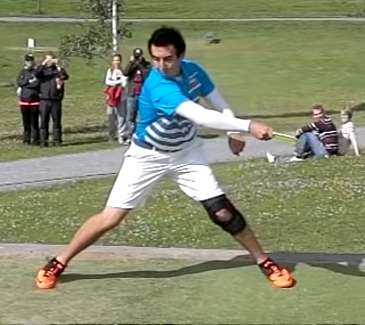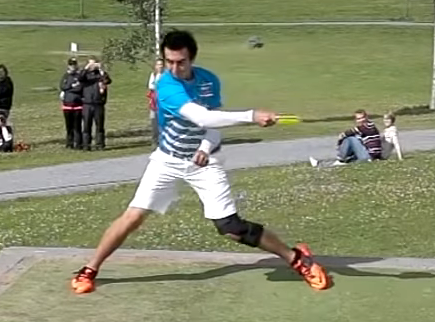Paige talking about the hips:
https://www.youtube.com/watch?v=TyV8411dObw#t=5m15s
She obviously isn't paying attention to the wisdom of DGCR.
Discover new ways to elevate your game with the updated DGCourseReview app!
It's entirely free and enhanced with features shaped by user feedback to ensure your best experience on the course. (App Store or Google Play)
Paige talking about the hips:
https://www.youtube.com/watch?v=TyV8411dObw#t=5m15s
Paige talking about the hips:
https://www.youtube.com/watch?v=TyV8411dObw#t=5m15s

Funny that she thinks the hips rotate after release. Proof that how one thinks they throw is different than reality. The hips rotate almost all the way before release.

Funny that she thinks the hips rotate after release. Proof that how one thinks they throw is different than reality. The hips rotate almost all the way before release.

Here we go again.
"You are wrong because insert proof here"
"No I am not, I throw 300ft+ therefore I am right"
You are blind.
HOW SO? Are her hips rotating before release?
Leading or following?
Following.
Hips lead rotation.
If you said hips shift to lead leg, we'd all agree, because Paige thinks about this literally all the time.


This shouldn't be an argument, Rodeo is 100% correct in that the hips start opening during the plant, before all weight is on the front foot. Is that useful information? Debatable, but its pretty easy to see if you look frame-by-frame. I think the timing is such that you couldn't really "try" to do this and its not very useful to think about.
Paul at point where hips are furthest turned back:

Paul at first point where all weight is on plant foot:

Video if you want to frame-by-frame yourself:
You'll notice that Jerm, the worst backhand thrower of this group, actually starts opening up the hips much earlier than the other 3.
I agree, the rotation of the hips, when it actually matters, happens because of the brace.Rodeo keeps pitching the idea that power comes from intentionally and forcefully rotating the hips, because he sees the pelvic bone and femur re-align as players shift their weight from rear foot, to front foot.
Hips play an important part in generating power, but it's a lateral shift towards the target, not a forceful rotation as he advocates.
Notice how JK plants more open than the others. The re-alignment of his hips is more noticeable.
Rodeo likes to take the opposing view just to argue with people.
Pros can delay longer because they actually counter-rotate more with better balance/posture and backswing sequence.My theory on this is that as a player progresses and gets better they can rotate much quicker and as such can delay just a bit longer to unwind. It's why you see the pros able to delay until the very last and then everything happens very quickly and explosively. Thus it can give the illusion that the hips aren't rotating until the front foot has firmly planted. The reality is that they are rotating coming into foot plant. Its just that they can delay just a bit longer than amateurs because they can rotate faster later.